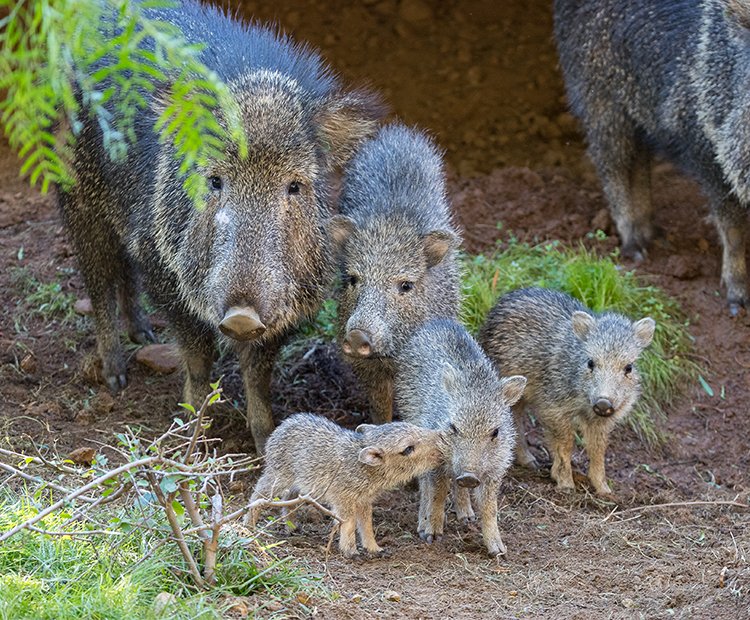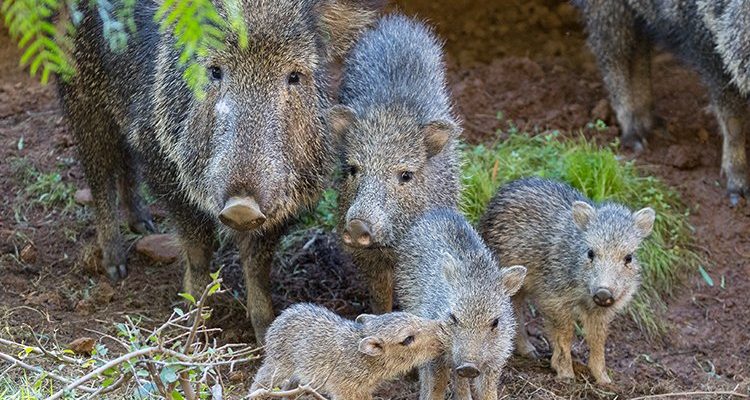
Peccarys, sometimes called javelinas, are fascinating animals that can tackle challenging environments. They live in deserts, forests, and grasslands, each presenting its own hurdles. Let’s dive into the amazing ways peccarys manage to survive and what makes them special in the animal kingdom.
Physical Adaptations: Nature’s Survival Tools
One of the first things that come to mind when discussing how peccarys survive is their physical adaptations. These animals aren’t just cute; they’ve got some serious tools for survival. Their stout bodies and sturdy legs allow them to traverse rugged terrains, whether it’s rocky hills or dense thickets.
A noteworthy feature is their thick skin, which helps protect them from harsh weather conditions. Imagine having your own built-in jacket! They can withstand both the scorching sun in the desert and the cold nights that follow. Plus, peccarys have powerful jaws and sharp teeth, enabling them to munch on tough roots and plants that other animals might pass by. This adaptability is key, especially when food is scarce.
Additionally, peccarys are equipped with a keen sense of smell. This sense is crucial for locating food and detecting predators. You might consider them nature’s little detectives, sniffing out what’s necessary to survive in their environment. Isn’t it fascinating how evolution equips creatures with just what they need?
Social Structure: Strength in Numbers
Have you ever heard the saying, “There’s strength in numbers?” Peccarys live by this motto. They are social animals that often form groups, known as sounders, which can include anywhere from a few to over twenty individuals. Living in a group provides various advantages, especially in tough environments.
Being part of a sounder helps peccarys protect one another from predators. When they sense danger, they can rely on each other to stay alert and respond quickly. This teamwork increases their chances of survival. Imagine a close-knit community working together to face challenges—it’s pretty remarkable!
These groups also enable peccarys to find food more effectively. Foraging together means they can cover more ground. They communicate with each other using a range of sounds and gestures, ensuring everyone is on the same page. Honestly, it’s a bit like living in a big family where everyone looks out for each other!
Dietary Choices: Eating What’s Available
You might be wondering, “What do peccarys eat?” Their diet plays a significant role in how they survive in harsh environments. Peccarys are omnivores, which means they eat both plants and animals. This flexibility is a major advantage when resources are limited.
They enjoy various foods, including fruits, roots, seeds, and even small animals like insects. During droughts, for instance, they can rely on cacti and other desert plants that retain moisture. Imagine having a buffet of options to choose from, tailored to whatever your environment offers!
Their foraging habits also help maintain the ecosystem. As they dig for roots and seeds, they aerate the soil, which benefits other plants. It’s a perfect example of how one creature’s survival strategy can also contribute positively to its surroundings.
Water Conservation: Mastering Thirsty Environments
In many harsh environments, water scarcity can be a real challenge, but peccarys have some tricks up their sleeves. They can adapt by consuming plants with high water content, along with their food. This means they get hydration from various sources, reducing their need to find standing water.
Interestingly, peccarys have a unique way of managing their water intake through their kidneys. They can concentrate their urine, which helps them conserve water. It’s like having a high-efficiency filter, ensuring they make the most out of every drop in their body.
Additionally, during particularly dry spells, they can enter a state of temporary torpor. This is a form of dormancy that slows their metabolism and reduces their need for resources, including water. It’s a clever survival tactic that allows them to endure tough times.
Behavioral Adaptations: Smart Survival Strategies
How do peccarys behave in their environments to stay alive? Well, their behavioral adaptations are just as essential as their physical traits. For starters, they tend to be crepuscular, meaning they are most active during the early morning and late evening. This behavior helps them avoid the heat of the day and take advantage of cooler temperatures.
Peccarys are also known to create wallows, which are shallow pits where they roll around in mud or dirt. This behavior isn’t just for fun; it cools them down and provides a barrier against parasites. You might think of it as their personal spa day, helping them to feel good in the often sweltering heat of their habitats.
Another smart strategy is their foraging behavior. Peccarys are constantly on the move, searching for new food sources and testing different areas. This adaptability allows them to thrive even when conditions change. They’ve got a “never give up” attitude, and that’s inspiring in its own right!
Predator Awareness: Staying Safe
Surviving in the wild isn’t just about finding food and water; it’s also about avoiding predators. Peccarys have an acute sense of awareness that helps them stay safe. Their keen sense of smell and sharp hearing allow them to detect potential threats long before they get close.
When faced with danger, peccarys often stand their ground rather than flee. They can be surprisingly fierce when threatened, using their tusks to ward off attackers. It’s a display of courage that shows they’re not just innocent bystanders in the animal kingdom. Think of it as them standing up for themselves in a tough world.
Additionally, their social structure helps mitigate these threats. When one member of the sounder senses danger, they alert others, creating a united front against predators. This teamwork is vital to their survival, proving that working together can help overcome even the most daunting challenges.
Peccarys are more than just fascinating creatures; they exemplify resilience in the face of adversity. Their physical, social, and behavioral adaptations all play crucial roles in how they navigate and survive in harsh environments. Just like us, they’ve learned to adapt to the challenges of their surroundings, finding ways to thrive despite difficulties.
From their unique diets to their clever water conservation tactics, peccarys remind us of the power of adaptation and community. It’s a story of survival that resonates not only in the wild but in our everyday lives as well. So, next time you think about how animals cope with challenges, remember the peccary and its incredible journey through the wild. They’re certainly survivors worthy of our admiration!

